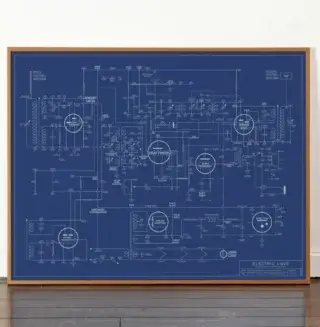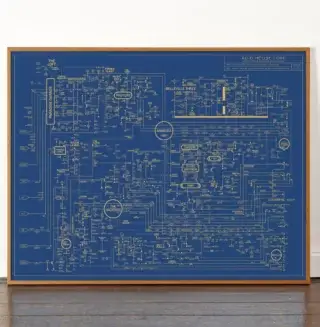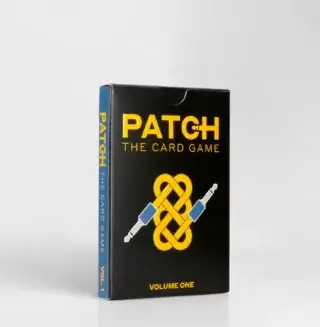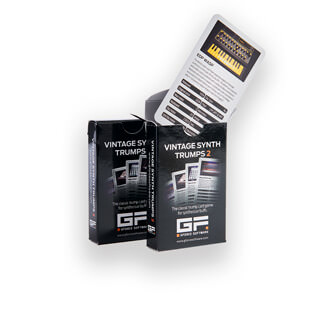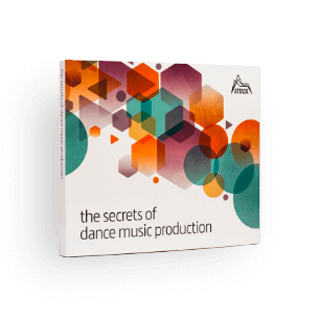The latest music trend is speeding up songs and older generations are not here for it. Why their disapproval is tone deaf given their own history of musical rebellion.
Whether you’re a regular TikTok user or not, you’re sure to have seen a recent video posted somewhere. The content may be nothing out of the ordinary, just the usual TikTok shenanigans, but the audio has probably caught your attention. The big trend now for soundtracking TikTok videos is sped-up versions of pop songs.
Less remixing than re-speeding, these songs have had their tempo increased by 30-50%, with the pitch similarly transposed up. The result is a chirpy, chipmunky take on the original that is striking a (high-pitched) chord with young people.
According to a recent article on MusicRadar, pitched-up songs are a big thing, with the TikTok hashtag #spedupsounds currently sitting at 11.1 billion views. It’s not just TikTok either.
A Spotify playlist of four hours of officially released songs has more than a million likes. Yes, officially released. While the trend may have started at the grassroots level, it has since made the leap to the labels, with plenty of songs getting official +8 re-rubs.
Old Man Yells At Phone
Not everyone loves the trend and the deciding factor seems to be age. Upon release of the article, the kind of social media outlets that old people frequent lit up with the expected “Nope” and “Kill it with fire” gifs. And it’s not just boomers either. I was disappointed to see plenty of my fellow Gen Xers joining into the chorus of “That’s not music” and “In my day!”
The funny thing is, the trend of non-musicians using technology to speed up music is exactly what Gen X did when it was young. Punk, sample-based dance music like jungle and hip-hop, and plenty more were our forms of musical rebellion. It’s not just Gen X either. The boomers did similar things, as did the generation before them, and the generation before them. History really does repeat itself.
The Need For Speed
One of the consistent hallmarks of new genres of music is speed. Of course, this is a broad generalization and every person is different, but in general, the older generation is more interested in slowing down while the younger wants to speed things up.
And in the same way, old, slow people generally react with anger or even fear to things that seem uncomfortably fast. Even the automobile. When cars first hit the market, there was a marked backlash against them, with people arguing that the human body would physically fall apart at speeds higher than what a horse could run. Obviously, they were wrong.
In music, punk was a game-changer. This was for a number of reasons (some of which we’ll explore more of later) but a large part of its appeal was its tempo. It debuted in the mid-’70s when slower, blues-based rock was king. Punk positively blew past it in terms of bpm.
This became even more pronounced as punk evolved, with hardcore in the early ‘80s taking it to almost inhumanly fast tempos. A similar thing happened with metal, with bands like Slayer obliterating the groups like Iron Maiden that came before them.
For my generation, Generation X, our need for speed expressed itself in the early 1990s with the ever-increasing beats per minute of first hardcore breakbeat and then jungle and drum and bass. Our music went from 125 bpm to 180 plus in the span of just a few years. And why not? Listening to jungle is exhilarating, all those pitched-up funk breaks slamming into each other. It’s no wonder that the younger generation has rediscovered it.
Around the same time, European countries like Germany and Holland were similarly pitching up techno. Techno started out like house, firmly in the 120 bpm range, and crept steadily upwards. This reached its apotheosis in the heart-stressing fast rhythms of Dutch gabber, with 200 beats per minute the standard.
On this side of the turn of the century, nightcore took trance and Eurobeat and upped the tempo, resulting in helium-inflated versions that can rival gabber in tempo yet still remain happy and fun.
There’s more of course, with examples predating even punk. R&B of the kind played by The Yardbirds and The Rolling Stones in the mid-1960s was essentially traditional blues jacked up on amphetamine pills. Swing and big band may seem laughably traditional now but at the time it was decried by trad jazz musos.
Young people like fast music. There’s nothing new about that.
Young people like fast music. There’s nothing new about that.
Abusing Technology
One of the reasons for the proliferation of TikTok-style sped-up music is how easy it is to make with a computer. While pitching entire audio files up 50% may not have been the original goal of audio editors and DAWs, there’s nothing new about young people repurposing and even abusing the technology of the day in an effort to make new kinds of music.
Around the same time that swing was branching off from jazz, young classical composer Conlon Nancorrow was becoming increasingly frustrated with the limits of human musicians. Conlon was fascinated with the relationship between tempo and harmony. His pieces required musicians to play multiple tempos at the same time, quickly and with mathematical precision. It wasn’t until he began using player pianos and custom-cutting his own piano rolls that he could fully realize the impossible music he had in his brain.
Rock musicians were integral in pushing the boundaries of popular music in the 1960s. Two of the techniques they developed, distortion and feedback, were both born from misusing technology. The Kinks’ “You Really Got Me” changed the way rock records were made thanks to the distortion on the guitar. Guitarist Dave Davies achieved this by slashing the paper speaker cone in his amp with a razor blade. Feedback, the sound of a guitar’s strings picking up the same guitar’s output, had been seen as undesirable. That is until Jimi Hendrix learned to harness it and incorporated it into his soloing.
Another technique that came from the abuse of technology was scratching. Hip-hop DJs took the sound of the record being manipulated under the needle, something that disco and rock DJs would mask, and broadcast it for everyone to hear. By moving the record rhythmically to the beat, a new art form was born. This, along with beat juggling and other turntablist techniques, would go on to heavily inspire music production.
DJs have also been known to purposely play records at the wrong speed. Speedy J’s classic “De-Orbit” is a perfect example. Although it was released at 33 rpm, many insist that it sounds better at 45. And in my rave days, san Francisco-based DJ Carlos would regularly play popular hip-hop of the time like Cypress Hill and House Of Pain at 45 and mix it in with house and techno records.
Music By Non-Musicians
“That’s not music” is a common complaint by older generations when they hear something loved by the new. I heard it enough times from my parents that I vowed to never say it myself. Sped-up songs may be upsetting to older generations because of how easy they are to make. You don’t need to be a musician to make an effective “new song.” All you need is some basic software and a computer or even a smartphone. Music by non-musicians is nothing new though.
Along with its speed and aggression, one of the other defining traits of punk was its DIY aspect. You didn’t need to be an accomplished musician to make exciting music. In fact, it was probably better if you couldn’t play. All you needed was a guitar, a few chords, and a lot of attitude.
That’s not music” is a common complaint by older generations.
The DIY ethos of punk carried over into rave music in the 1990s. While some records were undoubtedly made by producers familiar with music theory, much of it was not. This resulted in records that prioritized energy over harmony. You could even argue that it was the lack of traditional musicality that made them so exciting in the first place.
One reason for this was sampling. Samplers had been available since the late 1970s but they reached an affordable price point in the 1980s. This resulted in an explosion of sample-based music. Suddenly, you didn’t need to know how to play a guitar, piano or drums to make a track. You could get all those sounds by sampling other records. This, combined with the energy of rave, resulted in the release of a massive amount of records that are still inspiring new producers 30 years on.
Kids These Days
It’s clear that kids these days are just being … kids these days. From speeding up music like so many generations before them, to non-musicians breaking down barriers by misusing technology, there’s really nothing new happening here. The only real difference is that Generation X is finally having to reckon with their kids doing things their own way.
Generation X hasn’t yet had to deal with a generation gap in music as Gen Z has (for better or for worse) largely been content to stay within the dance music boundaries that their elders drew up. Now that they’re breaking out and trying new things, mom and dad are up in arms and taking to Facebook to complain.
Before you lock your caps and hit them youngsters with your best unironic Abe Simpson impression, remember that they’re doing essentially the same thing you did at their age. It doesn’t matter if you don’t like it or even get it. You’re not supposed to. It’s not for you. Cut the kids some slack, for they’re just doing what kids do. They’re finding their own way, creatively using the tools they have at their disposal to create a new world for themselves. Now if you’ll excuse me, I have a cloud to yell at.


